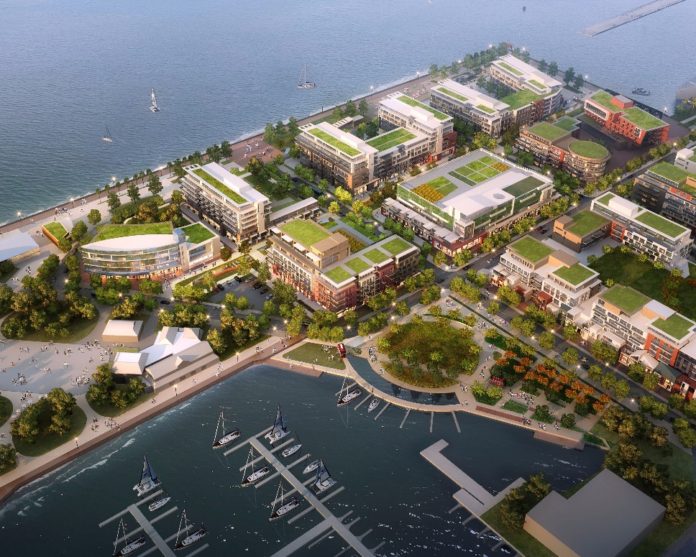From the ecology of Cootes Paradise Marsh to the urban parks of the West Harbour, from the economic activity within the industrial Bayfront, to the dynamic Lake Ontario Shoreline, Hamilton’s Waterfronts have something for everyone. Realizing that the waterfront was one of Hamilton’s hidden jewels, City leaders created a vision in the early 1990s to draw citizens to the waterfront by investing in public spaces and recreational uses.
Hamilton’s West Harbour is one of the last stretches of urban waterfront property from Oshawa to the Niagara Region that is undeveloped. The land truly is urban, only a few blocks from the new GO station, and a few more blocks from the downtown core. Building upon this legacy of substantial public investments, today the City is looking at those amenities as a way to draw private-sector investment. Private sector opportunities include mixed-use residential and commercial developments that will lead to increased use of the area for residents and businesses alike.
Currently, Hamilton’s City Council has committed over $60 million for new waterfront infrastructure, new boardwalks, trails, park space, break walls, marinas, sewer and water pipes, roads and bike paths. New public space enhancements will include a 30 metre wide waterfront park along the edges of Pier 8, a walkable greenway feature for storm water management, new 6-acre public space at the foot of James Street to welcome visitors to the water’s edge, and a well-connected pedestrian and cycle network.
With all the history and investment, residents and investors alike could ask what makes this last stretch of urban waterfront property special. With it could come many different answers but at its heart, the driving factor has been and remains a focus on the quality of life for Hamilton’s residents and visitors. Hamilton’s Waterfront is a key economic driver for the City as whole and is uniquely different in three specific ways.
First, is its historic transformation from industrial lands to what is now Bayfront Park completed in 1992, Pier 4 Park completed in 1993, the Waterfront Trail completed in 2000, and the Hamilton Waterfront Trust established in 2000 – balancing the needs of a variety of vital constituencies within the West Harbour. The City’s investments in public open spaces ensures that the West Harbour will remain a place for everyone to experience.
Secondly, Hamilton’s West Harbour is in fact right in the middle of an existing and historic neighbourhood. For generations families have lived in this waterfront neighbourhood and the City’s vision is that the neighbourhood will remain intact for generations to come. As the waterfront re-development enters its latest phase, the plan calls for a mix of uses, including residential, commercial, institutional and open space along with excellence in design and environmental enhancements – making it a truly ‘peoples’ place.
This then leads into the most distinctive difference. The size and scope of the planned re-development is at a scale that is human in nature, and is right for Hamilton, meaning new development concentrated on the Pier 5-7 lands are being limited to no more than 8-stories in height. Hamilton’s West Harbour will be much less dense, which will fit the existing scale of the area and avoid blocking out water views.
Hamilton’s waterfront will continue to be transformed into a vibrant, mixed-use, pedestrian-friendly and transit-supportive destination – come see for yourself.










